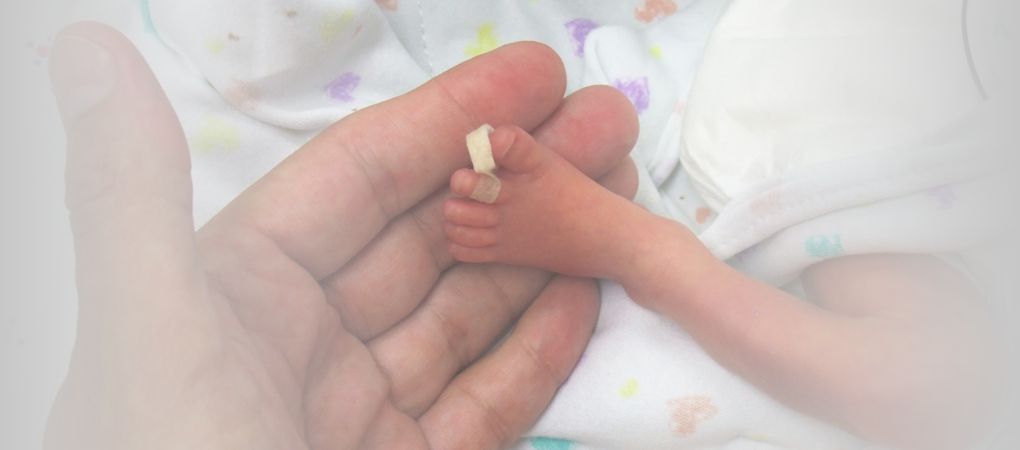Francesca Galiano
|
12/08/2022 - Last update 30/12/2022
Benedetta Marinelli, Francesca Pluchinotta, Vincenzo Cozzolino, Gina Barlafante, Maria Chiara Strozzi, Eleonora Marinelli, Simone Franchini, Diego Gazzolo | Year 2019
Osteopathic Manipulation Treatment Improves Cerebro-splanchnic Oximetry in Late Preterm Infants
Scope:
Prematurity
Type of study:
Self-controlled study (the participants are their own control)
Date of publication of the study’:
2019/Sep/04

Purpose of the study
- Objective: to evaluate the effectiveness of OMT on cerebral function and connected cerebro-splanchnic oximetry in late preterm infant
- Measured outcomes:
- Primario: primary: cerebral oximetry (crSO2) using near infrared spectroscopy (NIRS)
- Secondary: splanchnic oximetry (srSO2), cerebro-splanchnic oxygenation ratio (CSOR), cerebral fractional tissue oxygen extraction (cFTOE), splanchnic fractional tissue oxygen extraction (sFTOE) through NIRS; heart rate, respiratory rate and arterial oxygen saturation (SaO2) through multiplatform monitor
Participants
- Numbers: 18 infants (7 female and 11 male)
- Criteria of inclusion: late preterm infants (34-36 gestational weeks) hospitalized in a neonatal intensive care unit
- Criteria of exclusion: congenital heart diseases, congenital malformations, gastrointestinal abnormalities, cutaneous diseases that prevented the use of the assessment devices
- Groups of study: 1 group
Group 1: OMT, 18 infants (mean gestational age 35.1 weeks)
Interventions and evaluations
- Continuous evaluation of heart rate, respiratory rate and SaO2 through a multiparameter monitor
- Evaluation of the following parameters: maternal age, incidence of chorioamnionitis, premature rupture of membranes, preeclampsia, need for prophylaxis with antenatal steroids, cesarean delivery
- Assessment of the Apgar’s score, incidence of respiratory distress syndrome, mechanical ventilation, persistent arterial duct, intraventricular hemorrhage, early onset sepsis, necrotizing enterocolitis, premature retinopathy, bronchopulmonary dysplasia, use of surfactants
- Daily assessment of the neurological status by the Prechtl’s method
- Evaluation of brain function by ultrasound at the frequency of 3.5mhz 24 hours after birth and on the 7th day of life and before discharge
- Assessment of hemodynamic changes and oxygenation through NIRS for 30 minutes before, during and after the intervention on the 7th day of age
- the indexes of crSO2, srSO2, CSOR, cFTOE e sFTOE were calculated
- 1 30-minutes session of OMT (10 minutes of evaluation and and 20 minutes of treatment)
- OMT: structural evaluation of the skull, spine, pelvis, abdomen, and upper and lower extremities in order to highlight somatic dysfunctions according to the TART method then followed by a personalized treatment, based on the evaluation, using indirect techniques (myofascial release and balanced ligamentous and membranous tension)
- OMT performed by osteopaths experts in the field of neonatology
Results
- Primary outcomes: OMT promoted a statistically significant increase in crSO2, compared to both pre-treatment and the post-treatment periods.
- Secondary outcomes: l’OMT promoted a statistically significant decrease in cFTOE, compared to both pre-treatment and the post-treatment periods. L’OMT induced a statistically significant decrease of srSO2 during the treatment time, to which an equally statistically significant post-treatment increase followed bringing the srSO2 values back to the pre-treatment levels. Vice versa, OMT induced a statistically significant increase in sFTOE during the treatment period, followed by an equally statistically significant post-treatment decrease that brought sFTOE values back to pre-treatment levels. With regard to the CSOR values, they were found greater than before the treatment both during and after treatment, in a statistically significant way. Heart rate, respiratory rate and SaO2 were within normal range.
- Further analyses: all children showed normal blood and neurological tests, as well as ultrasound assessment of brain function. At birth, the Apgar’s score was higher than 7 in all children, while: 5 children needed surfactants and mechanical ventilation for respiratory distress syndrome; 2 children needed antibiotics for late onset sepsis; there have not been any cases of other pathologies besides those evaluated, nor use of drugs for persistent ductus arteriosus.
Discussion
OMT was shown to be able to statistically significantly affect the parameters related to cerebral and splanchnic oxygenation and tissue activation (measured by the ability to extract oxygen from the blood). The increase in crSO2 accompanied by a decrease in cFTOE is particularly interesting and it also seems to indicate better tissue metabolic activity at the level of the central nervous system, which is an especially important activity in case of prematurity as it concerns essentially the neurological development. The increase of CSOR confirms this hypothesis, to indicate a beneficial effect of OMT on the hemodynamic redistribution towards the cerebral regions.
At the splanchnic level, the reduction followed by an increase in srSO2 and the increase followed by a decrease in sFTOE may confirm an initial hemodynamic redistribution towards the brain induced by OMT, finally followed by improved oxygenation and splanchnic tissue function. Naturally, given the frailty and complexity of preterm infants, larger and longer-term studies are needed to better evaluate the results obtained in this one. Furthermore, possible biases in the measurement taken with NIRS should be taken into account.
The review of Osteopedia
By Marco Chiera
Strengths: first study to assess the effect of OMT on brain and splanchnic tissue oxygenation and function; calculation of the sample size (how many children to recruit) on the basis of hypotheses; good description of prematurity and its consequences; good discussion of the results obtained.
Limits: the terminology used is not always precise (eg, the study is referred to as observational when actually an intervention by the researchers takes place); many parameters have been measured but have not been correlated with the results obtained (although, given the small sample, the comparison would have little statistical sense). As indicated by the authors, follow-up studies are needed to assess the clinical impact of similar oxygenation changes.

Are you an osteopath?
Register and enjoy the membership benefits. Create your public profile and publish your studies. It's free!
Register now
School or training institution?
Register and enjoy the membership benefits. Create your public profile and publish your studies. It's free!
Register now
Do you want to become an osteopath? Are you a student?
Register and enjoy the membership benefits. Create your public profile and publish your studies. It's free!
Register now







